Best Book for Linux Operating System
In this article, you will learn about the best book for the Linux operating system. But before discussing the best book, you must know about the Linux operating system.
What is Linux Operating System?
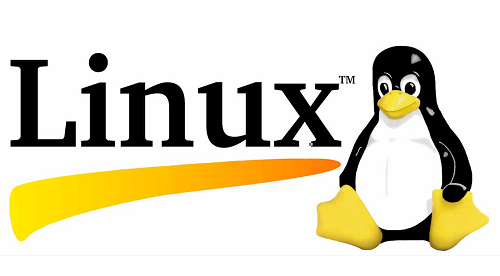
The Linux OS is another version of the UNIX OS that is based on the Linux Kernel. Linus Torvalds designed it in 1991. It is a free and open-source OS licensed under the GNU General Public License. Because of its low reliance, strong modularity, and extensive distributions, it has been the fastest-growing operating system among industries over the years. Its terminology includes a kernel, an init-program, a system library, a bootloader, and a system utility. It is also well-known for its open-source support and adaptability.
Initially, it was created and designed for Computers. It has now made its way into various platforms, such as servers, mainframe computers, supercomputers, and many more. It is now commonly utilized in embedded devices, including routers, televisions, automation controls, game consoles, smartwatches, etc. Android is the most popular application of the Linux OS that is designed on the Linux kernel and operates on smartphones and tablets. It has the largest installed base of any general-purpose OS due to Android. It’s usually included with a Linux distribution.
The two primary aspects or layers of the Linux architecture are the Kernel Layer and the User Layer. Every Linux distribution is unique, with its own set of user interfaces. You have the choice of selecting distribution based on your needs.
Advantages and disadvantages of the Linux Operating System
There are various advantages and disadvantages of the Linux operating system. Some advantages and disadvantages of the Linux operating system are as follows;
Advantages
- On Linux, there are numerous text editors available. Most of the text editors are available for free and may be used without difficulty. If you are a developer, you may utilize any free software packages available in the market, such as Atom, Sublime text editor, Visual Studio Code, Vim, etc.
- It is an open-source OS which means that any user may use the source code and modify it according to their needs. You can install Linux on as many computer systems as you like without paying for a license.
- The command prompt in Linux is quite powerful. If you’re a developer, you may use the CLI to execute a variety of tasks. CLI can also be used to install various repositories and packages.
- You don’t need to install anti-virus software if you use Linux. Viruses are less likely to infect Linux systems.
- You can run Linux if your system’s disc space is restricted. Extra disc space is not required to run Linux for longer periods of time.
Disadvantages
- Some device drivers are not available for Linux, which is one of the most common challenges that most Linux users face. Because Windows and Mac have more users than Linux, hardware companies choose to create drivers for those platforms.
- Most games are designed for Windows but not for Linux. Because the Windows platform is so widely utilized, game developers are becoming increasingly interested in it.
- If you have any problem with your OS, finding a solution may be difficult. Starting with Windows is simple, but Linux is more difficult for beginners. It would be best to learn how to use the command-line interface, and finding new software might be challenging.
Best Book for Linux OS
There are various best books for Linux OS that help to understand Linux very effectively. Some of the main books of the Linux OS are as follows:
- Linux: The Complete Reference
- A Practical Guide to Linux Commands, Editors, and Shell Programming
- Linux Hardening in Hostile Networks
- Linux for Developers
- Linux Bible
- How Linux Works, 3rd Edition: What Every Superuser Should Know
- Linux Pocket Guide
- Introduction to Linux: A Hands on Guide
- Linux Command Line and Shell Scripting Bible, 3rd Edition
- Learn Linux Quickly
- Linux for Beginners: An Introduction to the Linux Operating System and Command Line by Jason Cannon
- Linux in a Nutshell: A Desktop Quick Reference
- The Linux Programming Interface
- Linux Command Line: FAST and EASY!: Linux Commands, Bash Scripting Tricks
- Linux Kernel Development
Linux: The Complete Reference
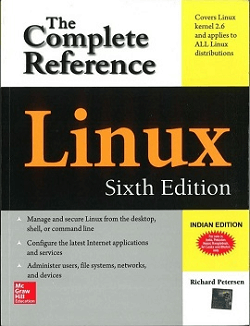
Author: Richard Petersen
This book is intended for computer science students and anybody who want to learn more about the Linux OS and its commands. This book also explains Linux’s features, tools, and utilities in depth. This book also includes chapters that describe the installation, configuration, and administration. There’s also information on installing Ubuntu and Red Hat/Fedora software. There is also information on deploying FTP, proxy, Web, mail, news, print, database servers, etc. It is a must guide for anyone who uses Linux.
In this book, you may also learn various topics, including:
- How to Install, configure, and administer any Linux distribution.
- Setting up an office, Internet, database, and multimedia applications.
- Configure and maintain IPv6, NIS, DHCPv6, networking, and remote access.
- How to secure data using SELinux, SSH, Netfilter, and Kerberos.
- Administer system resources using HAL, udev, and virtualization.
- How to use mail, news, proxy, FTP, Web, print, and database servers.
- How to encrypt network transmissions with LUKS, GPG, and IPsec.
- Access remote files and devices using NFSv4, NIS, GFS, PVFS, and SAMBA.
If you want to buy this Linux book, you may buy this book with the help of the given below link:
https://www.amazon.in/Linux-Complete-Reference-Richard-Petersen/dp/007149247X
A Practical Guide to Linux Commands, Editors, and Shell Programming
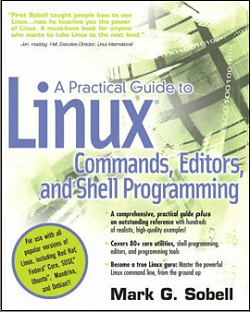
Author: Mark G Sobell
This book is written for computer science students and those people who want to learn more about the Linux OS and its commands. There is information on filesystems, shells, editors, utilities, programming tools, and regular expressions. A chapter on MySQL is included to get the reader started on the widely used relational database management system (RDBMS). This book also provides numerous actual examples to help better understand Linux OS. It also includes a professional introduction to Python.
There are various topics that you may learn with the help of this book. These topics are as follows:
- A MySQL chapter to get you started with this ubiquitous RDBMS.
- Expert advice on using Rsync to automate remote backups
- Dozens of system security suggestions, including step-by-step instructions for building secure communications using ssh and scp.
- Instructions for using apt-get and yum to update systems.
- Vim and emacs editing strategies for high productivity
- A 295-page command reference section that includes 98 utilities such as find, grep, sort, and tar.
If you want to buy this Linux book, you may buy this book with the help of the given below link:
https://www.amazon.in/Practical-Guide-Commands-Editors-Programming/dp/0131367366
Linux Hardening in Hostile Networks
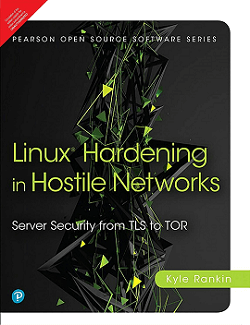
Author: Kyle Rankin
It is another best book for Linux OS. Usually, books on difficult issues such as Linux security are written in complex technical language intended for experienced sysadmins. It is a little different than the others. It is suitable for all levels of experience, from non-technical managers to seasoned DevOps/SecOps professionals to CTOs.
Every chapter in this Linux book is divided into three sections. The first section offers a high-level overview of the security topic and simple best practices that practically anybody can understand and implement.
After that, the second section takes it to the next level with moderate to advanced hardening steps for system administrators. Even if you do not follow them all step by step, you may still read them to understand the subject better.
The third section covers sophisticated and time-consuming advanced hardening techniques. It starts with a general introduction of security concepts, then secures workstations and hardens Linux servers and networks. After that, it discusses the hardening of critical services such as web servers, DNS, email, and databases.
A chapter on incident response concludes the book. It provides you with some practical tips on what to do if your server has been compromised. It also covers many topics, such as how to examine what happened, what the assailants did, how they did it, and what can be done to prevent future incidents.
According to the author, today’s sophisticated dangers tend to find their way into tomorrow’s script-kiddie toolkits. It is critical to have a security attitude, and this book can help you develop one.
If you want to buy this Linux book, you may buy this book with the help of the given below link:
https://www.amazon.in/Linux-Hardening-Hostile-Networks-Development/dp/0134173260
Linux for Developers
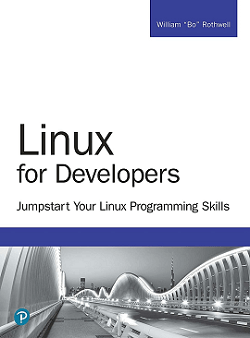
Author: William “Bo” Rothwell
It is a small book of fewer than 200 pages. It is mainly intended for software developers rather than Linux kernel developers. It is the best book for software developers who use Windows operating system as their primary workstation. Most firms use the Windows operating system for development tools, but the infrastructure exists on Linux servers for deployment.
As a software developer, you probably don’t want to waste time figuring out how to configure networks, mount discs, etc. It’s not that it’s not useful to know, but it’s not necessary for your primary coding job.
It provides an overview of the Linux command line and focuses on typical developers’ most important Linux commands. You will also learn about the filesystem, commands for listing content, browsing files, path navigation, file permissions, finding text in files, etc.
It also covers how to use standard terminal-based editors such as Vim before discussing software packaging. There are other sections dedicated to different scripting languages. So, you’ve learned the fundamentals of Bash, Perl, and Python scripting. The book concludes with a few chapters on how to use Git, manage files with Git, and comprehend file differences with Git.
If you want to buy this Linux book, you may buy this book with the help of the given below link:
https://www.amazon.in/LINUX-Developers-Jumpstart-Programming-Skills/dp/9386873540
Linux Bible
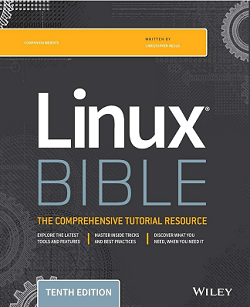
Author: Christopher Negus
It’s likely the most comprehensive Linux book, covering many topics. Over 800 pages, you’ll study everything from the foundations of the Linux command line to advanced administration issues.
Each chapter concludes with exercises that put your newly acquired information to use in a specific circumstance. Suppose you are studying to become a sysadmin and preparing for a Linux certification exam or want to expand your Linux knowledge. In that case, the Linux Bible is the ideal book to read. The answers will find at the end of the book.
If you want to buy this Linux book, you may buy this book with the help of the given below link:
https://www.amazon.in/Linux-Bible-Christopher-Negus-ebook/dp/B089Y5P85X
How Linux Works, 3rd Edition: What Every Superuser Should Know
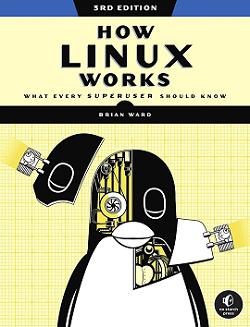
Author: Brian Ward
As you may know, Linux is an open-source OS. It means you have complete control over your system. It can be extremely effective if you have a better understanding of how it operates, like how the system starts up, how networking works, and what the kernel performs.
The author makes the concepts behind Linux internals understandable to everyone interested in the OS’s inner workings. You’ll find the kind of experience that only arrives from years of doing things the hard way.
There are various topics that you may learn with the help of this book. These topics are as follows:
- How Linux boots, from boot loaders to init implementations
- How the kernel manages devices, device drivers, and processes
- How networking, interfaces, firewalls, and servers work
- How to write effective shell scripts
If you want to buy this Linux book, you may buy this book with the help of the given below link:
https://www.amazon.in/How-Linux-Works-Brian-Ward/dp/1718500408
Linux Pocket Guide
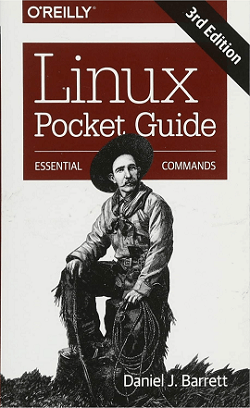
Author: Daniel J. Barret
The Linux Pocket Guide is a compact pocket book that may be used to look up Linux commands and functionalities rapidly. It does not go into great detail on how Linux works. It’s a set of commands for Linux. The commands are divided into different parts like file viewing, directory navigation, user management, networking, etc.
There are short and quick examples of the commands, syntax, and brief descriptions. You may quickly examine which commands are mentioned on which pages. At the end of the book, there is also an alphabetical index.
Consider it a large Linux cheat sheet and a replacement for the manpages. It’s more convenient to keep it at your desk because it eliminates the need to search the internet for command examples constantly.
This book offers quick answers to the following topics:
- Text manipulation and pipelines
- Backups and remote storage
- Network connections
- Audio and video
- Programming with shell scripts
- The filesystem and shell
- File creation and editing
- User account management
- Viewing and controlling processes
- Becoming the superuser
- Installing software
If you want to buy this Linux book, you may buy this book with the help of the given below link:
https://www.amazon.in/Linux-Pocket-Guide-Essential-Commands-ebook/dp/B01GGQKXRG
Introduction to Linux: A Hands on Guide
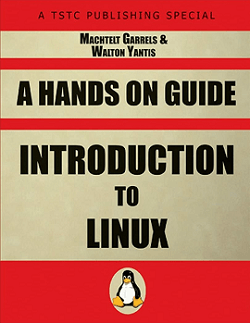
Author: Machtelt Garrels and Walton Yantis
When you first install a Linux OS distribution and are unsure where to go from there, it might be scary and confusing. You may learn anything from the history of Linux to the fundamentals of Linux distribution navigation with the help of this book.
Machtelt Garrels has written this book for beginners. This resource takes on the task of providing a complete overview of the Linux OS with so many resources strewn over the internet. Many exercises are included at the end of every chapter to keep you motivated and challenged. It also works as a simple reference for advanced users. It is an excellent foundation builder as you progress to more advanced Linux and network management topics.
There are various topics that you may learn with the help of this book. These topics are as follows:
- You will learn about installing software and package management.
- You will also learn Initial setups, Files management, Command Line Interface, and useful Linux commands.
- Linux files system and partitioning
- X window system and configuration and fonts set up.
If you want to buy this Linux book, you may buy this book with the help of the given below link:
https://www.amazon.in/Introduction-Linux-Hands-Machtelt-Garrells/dp/1934302627
Linux Command Line and Shell Scripting Bible, 3rd Edition
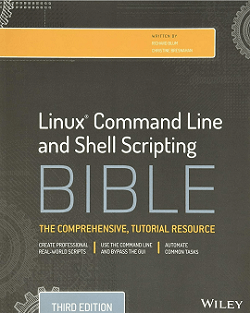
Author: Richard Blum
Richard Blum writes this book. It serves as a basic and extremely important Linux resource that will help you understand Linux with several examples. It starts with the basics of the command line and moves on to bash scripting, which will be useful in your day-to-day Linux administration, and it goes above by providing the best examples. The third edition is the latest release of this book, and it includes new updated text and examples that are synchronized with the latest Linux features.
The most interesting about this book is how the author has gone out of his way to provide clear tutorials that you may easily follow and understand. The examples in the book are very relevant. It may satisfy your inquiring appetite with patience and hard work.
If you want to buy this Linux book, you may buy this book with the help of the given below link:
https://www.amazon.in/Linux-Command-Shell-Scripting-Bible/dp/111898384X
Learn Linux Quickly
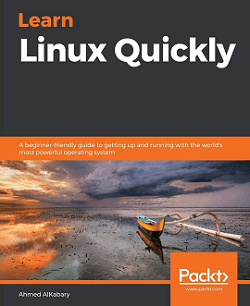
Author: Ahmed Alkabary
The book reads like a collection of blog postings in a positive way. You’ll get the chapters and topics covered in the “How to” manner with various command examples and explanations of the outputs, and useful schematic diagrams.
Each chapter concludes with a knowledge check section in which you are given a short series of exercises to complete and a set of true/false questions. It is the best opportunity to test your newly acquired information. The solutions are at the end of the book.
The book’s language is conversational and easy to understand. It is a useful book to learn Linux commands. If you want to buy this Linux book, you may buy this book with the help of the given below link:
https://www.amazon.in/Learn-Linux-Quickly-beginner-friendly-operating/dp/180056600X
Linux for Beginners: An Introduction to the Linux Operating System and Command Line by Jason Cannon
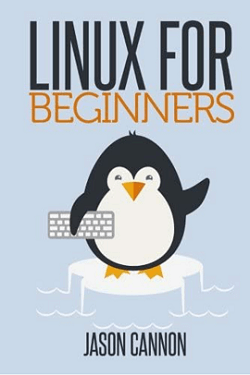
Author: Jason Cannon
You may have experienced how difficult it is to learn something new. As you may find information out there that may assist you, finding someone who will guide you from the ground up is difficult. You begin learning and quickly discover that too many concepts, commands, and nuances aren’t taught. This type of event is frustrating since it raises more questions than answers.
What makes Linux for Beginners stand out is that it makes no assumptions about your background or expertise in Linux. This book will greatly benefit the complete beginner with no prior expertise. It will help you step-by-step process using a logical and systematic approach. Any new concepts, commands, or jargon you face will be explained in plain terms so that everyone can understand it.
There are various topics that you may learn with the help of this book. These topics are as follows:
- How to get access to a Linux server if you don’t already.
- How to create, rename, move, and delete directories.
- What software is required to connect to Linux from a Mac or a PC, and screenshots are included.
- How to use the nano, vi, and emacs editors.
- How permissions operate and how to easily read even the most cryptic Linux permissions.
- The Linux file system layout and where to find programs, customizations, and documentation.
- Two methods to search for files and directories.
- How to compare the contents of files.
- How to compress files to save space and make transferring data easy.
- What SSH is and how to use it, including creating and using SSH keys.
If you want to buy this Linux book, you may buy this book with the help of the given below link:
https://www.amazon.in/Linux-Beginners-Introduction-Operating-Command-ebook/dp/B00HNC1AXY
Linux in a Nutshell: A Desktop Quick Reference
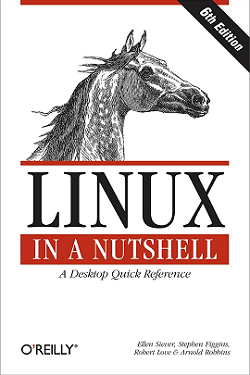
Author: Stephen Figgins
The Linux in a Nutshell book is written by Stephen Figgins. It mainly focuses on the fundamentals of the Linux operating system and a more in-depth discussion of emerging features such as virtualization and revision control with git. It contains system and network administration tools, programming tools, editors, the shell, etc. It also allows using a large variety of Linux commands.
Whether you’re a beginner at Linux or have been using it for many years, this book will provide many useful new tips and tricks. If you want to buy this Linux book, you may buy this book with the help of the given below link:
https://www.amazon.in/Linux-Nutshell-6e-Ellen-Siever/dp/0596154488
The Linux Programming Interface
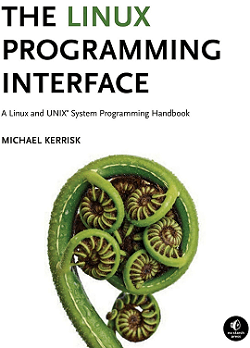
Author: Michael Kerrisk
This Linux book is written by Michael Kerrisk. This book contains detailed explanations of the system calls and library functions you’ll need to learn Linux programming.
This book focuses on various Linux-specific features, such as epoll, notify, and the /proc file structure. It strongly emphasizes UNIX standards (POSIX.1-2001/SUSv3 and POSIX.1-2008/SUSv4). This Linux book will also be useful to programmers who work on other UNIX platforms. In this Linux book, you will get more than 200 example programs. You will also get 115 diagrams and 88 tables that help to understand the Linux concepts.
There are various topics that you may learn with the help of this book. These topics are as follows:
- How to read and write the files effectively.
- How to write secure programs.
- How to build and use the shares libraries.
- How to write network applications with socket API.
- How to use signals, timers, and clocks.
- How to write multithreaded programs using POSIX threads.
- How to create processes and execute programs.
- How to run interprocess communication using pipes, message queues, shared memory, and semaphores.
If you want to buy this Linux book, you may buy this book with the help of the given below link:
https://www.amazon.in/Linux-Programming-Interface-System-Handbook/dp/1593272200
Linux Command Line: FAST and EASY!: Linux Commands, Bash Scripting Tricks
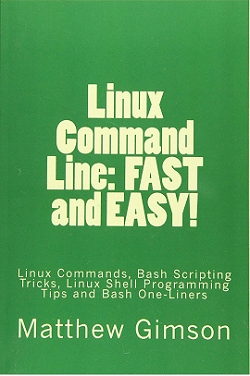
Author: Matthew Gimson
It is another important book to learn Linux OS. It is intended for computer science students and anybody who want to learn more about the Linux OS and commands. It explains clearly the Linux command line, bash one-liners, and bash scripting methods. It also covers various Linux commands, both simple and advanced. It includes command substitution, brace expansion, loops, and command history. This book also covers the fundamentals of bash scripting and Shell scripting. You will be able to make an executable shell file and run it from the command line.
If you want to buy this Linux book, you may buy this book with the help of the given below link:
https://www.amazon.in/Linux-Command-Line-Fast-Easy/dp/1519127049
Linux Kernel Development
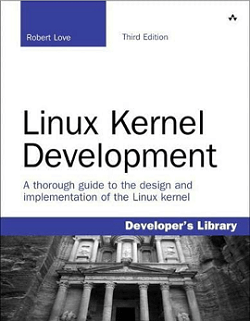
Author: Robert Love
This book is written by Robert Love. The book goes into detail on the Linux kernel’s architecture and implementation. The author is presenting the knowledge to be useful to individuals who are writing and developing kernel code.
The book discusses Linux kernel characteristics such as design, implementation, and interfaces. It discusses the Linux kernel from a practical and theoretical aspect, making it suitable for a wide range of interests and needs. It’s also an excellent resource for programmers interested in learning more about the Linux operating system.
The author shares valuable knowledge and experience on the 2.6 Linux kernels. It also covers various topics, including process management, memory addressing, the system call interface, memory management, kernel synchronization, time management and timers, scheduling, the VFS, portability concerns, and debugging techniques. It also focuses on most aspects of the Linux 2.6 kernel, such as the CFS scheduler, block Input/Output layer, preemptive kernel, and Input/Output schedulers.
If you want to buy this Linux book, you may buy this book with the help of the given below link:
https://www.amazon.in/Linux-Kernel-Development-Developers-Library-ebook/dp/B003V4ATI0
Conclusion
There are some best books for Linux operating system for people searching for the best books for Linux operating system. People may choose the best book according to their requirements.
